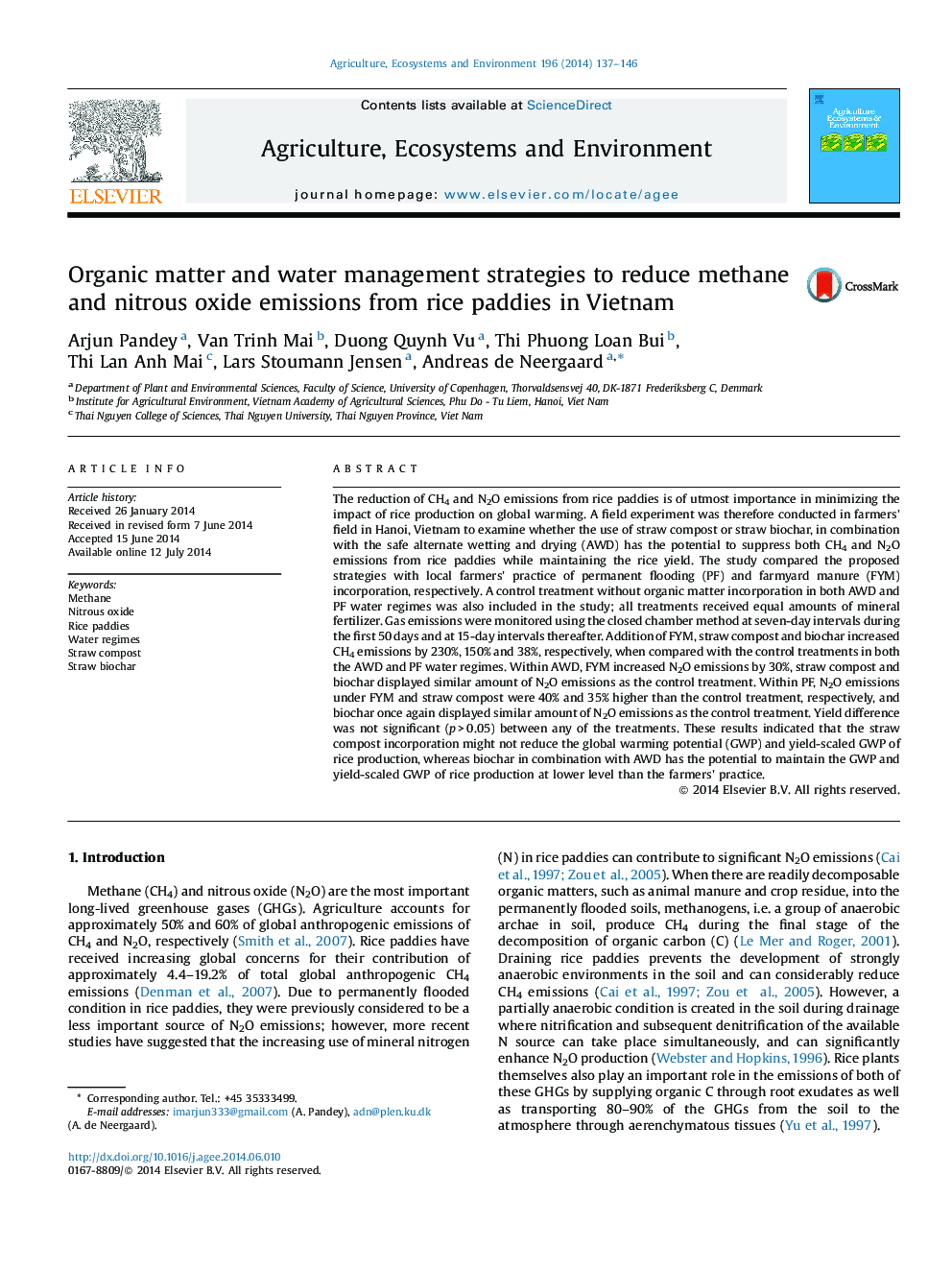| کد مقاله | کد نشریه | سال انتشار | مقاله انگلیسی | نسخه تمام متن |
|---|---|---|---|---|
| 2414002 | 1552056 | 2014 | 10 صفحه PDF | دانلود رایگان |
• Effect of safe AWD on CH4 and N2O emissions from rice paddies were examined.
• Potential of straw compost and straw biochar to reduce emissions were also tested.
• Safe AWD was proved to be effective in suppressing CH4 emissions but not N2O.
• Safe AWD with straw biochar proved to be effective strategy in suppressing overall emissions.
The reduction of CH4 and N2O emissions from rice paddies is of utmost importance in minimizing the impact of rice production on global warming. A field experiment was therefore conducted in farmers' field in Hanoi, Vietnam to examine whether the use of straw compost or straw biochar, in combination with the safe alternate wetting and drying (AWD) has the potential to suppress both CH4 and N2O emissions from rice paddies while maintaining the rice yield. The study compared the proposed strategies with local farmers' practice of permanent flooding (PF) and farmyard manure (FYM) incorporation, respectively. A control treatment without organic matter incorporation in both AWD and PF water regimes was also included in the study; all treatments received equal amounts of mineral fertilizer. Gas emissions were monitored using the closed chamber method at seven-day intervals during the first 50 days and at 15-day intervals thereafter. Addition of FYM, straw compost and biochar increased CH4 emissions by 230%, 150% and 38%, respectively, when compared with the control treatments in both the AWD and PF water regimes. Within AWD, FYM increased N2O emissions by 30%, straw compost and biochar displayed similar amount of N2O emissions as the control treatment. Within PF, N2O emissions under FYM and straw compost were 40% and 35% higher than the control treatment, respectively, and biochar once again displayed similar amount of N2O emissions as the control treatment. Yield difference was not significant (p > 0.05) between any of the treatments. These results indicated that the straw compost incorporation might not reduce the global warming potential (GWP) and yield-scaled GWP of rice production, whereas biochar in combination with AWD has the potential to maintain the GWP and yield-scaled GWP of rice production at lower level than the farmers' practice.
Journal: Agriculture, Ecosystems & Environment - Volume 196, 15 October 2014, Pages 137–146
